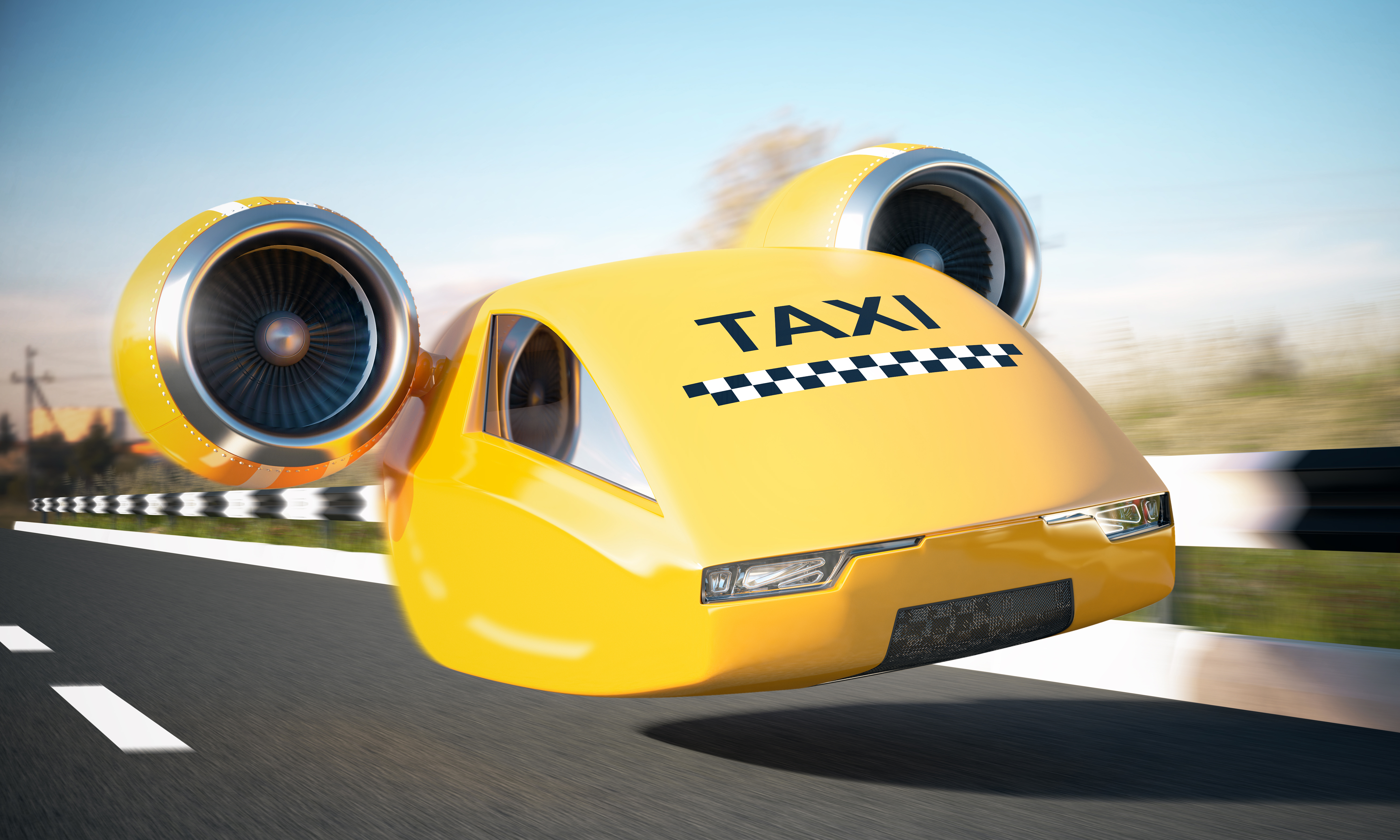Urban Air Mobility
Transport of the future
By Andrew Gibson, Aerospace Sales Engineer
An important part of a maxon Sales Engineers role is to predict the future. We need to think ahead to what applications the world will need in 5 or 10 years.
For me, as the Aerospace Sales Engineer, I see exciting times around the corner. Firstly, the commercial drone market is picking up pace, and the recently developed maxon drone propulsion system is already in in-flight trials. Coming up fast is the Urban Air Mobility (UAM) market. Although Urban Air Mobility is a relatively new branch of the aerospace industry, myself and my aerospace colleagues within maxon are watching the market develop with keen interest and foresee a promising future.
What is meant by Urban Air Mobility?
The increasing number of vehicles in towns and cities around the globe is a huge problem. The only free space is above our heads, and yes, we are talking about flying cars like in sci-fi movies such as Blade Runner and The Fifth Element.
Part of the recent online Farnborough Airshow was the 2nd Global Urban Air Summit. This event was an opportunity for global players to present their vehicles, discuss current and future trials and demonstrate potential market value. Companies such as Uber, Boeing and Embraer suggest that this is a market with significant future potential.
What will UAM's look like?
This mode of transport will use electrical Vertical Take-off and Landing (eVTOL) and designed to carry 2 to 5 passengers depending on the manufacturer. Designs vary, some look like large versions of the drones we are familiar with, using 4 or 6 propellers. Others have wings with propellers above for vertical lift at low speed and other propellers for forward motion. Some have tilt rotors, utilising the same propellers for vertical lift and forward movement. Each design optimised for a market segment.
Where will these carriers be used?
Initially, I see three main uses: 1. The city taxi, short hops around a city 2. The airport to city commute, longer journeys between city centres and airports. 3. City to city hops, trips that are too short for a commercial flight and are quicker than by road or rail.
How are maxon involved?
Maxon’s Aerospace division specialises in the development of high-precision DC motors and drive systems that withstand temperatures of -55 °C to +85 °C as well as extreme vibrations during take-off and landing. We are engaged in passenger aircraft, helicopters, spacecraft and unmanned aerial vehicle applications. Our engineers have transferred the knowledge gained from numerous special projects, such as the drives for the Mars missions, to other aerospace projects and further developed this expertise for serial production. Our state-of-the-art technology and extensive laboratory tests make this possible. Maxon is EN 9100 certified.
Maxon’s heritage in aerospace gives a significant advantage for developing vehicles for the future. As Urban Air Mobility vehicles are electric, there will be many requirements for efficient electrical actuation. The power density of the maxon motor range means that motor size can be decreased, therefore reducing weight and providing greater economy to the overall vehicle. maxon's substantial range of off-the-shelf products allows us to provide proof of principle samples quickly. The next step is to fine-tune and modify the products to meet the specification requirements fully.
Maxon motors are used in aviation actuators. Vehicles with wings and traditional flight surfaces require small, lightweight and powerful actuators for flight control actuation and ailerons. Smaller, lighter-weight vehicles require smaller, lighter-weight actuators, for raising and lowering the undercarriage, particularly for the aerodynamics of longer-range vehicles. Another area where maxon motors have already proved successful in multiple industries is haptic feedback on control sticks. Applications that are not on traditional aircraft include actuators for vented fans, where the fans rotate between vertical and horizontal flight. Similarly, for the tilt rotators, actuators will be required to move these.
There are also non-flight critical applications that will need lightweight products. The vehicles of the future could have powered doors. There is also seat actuation, not just forward and back, and up and down, but also rotational, making the cabin a more social/meeting space. Multiple applications will be on the designers wish list, to give their vehicle a unique selling point. These are all areas that maxon already has product working in the field.
Finally, when can we expect to see these flying vehicles? Well, there are already some trials happening in China and the US. Paris is planning on having a system running for the Olympics in 2024. That sci-fi vision is close to becoming a reality.
Andrew can be contacted on andrew.gibson@maxongroup.com or 01189 733337.
© 2020 by maxon UK&I
Back to the news overview